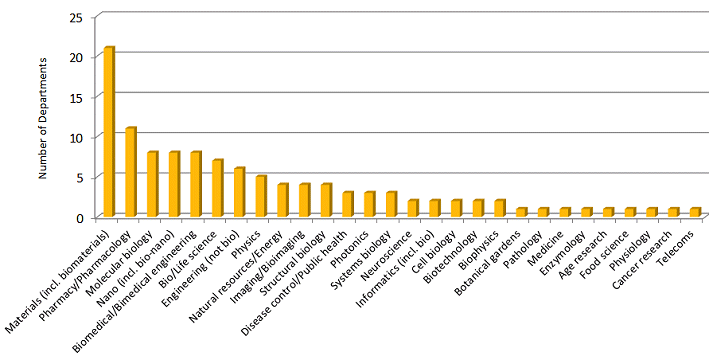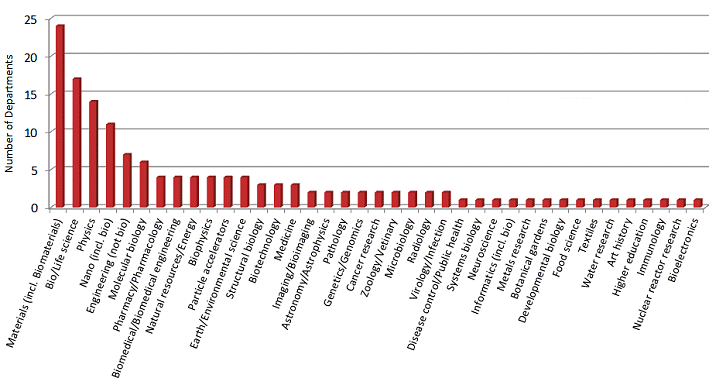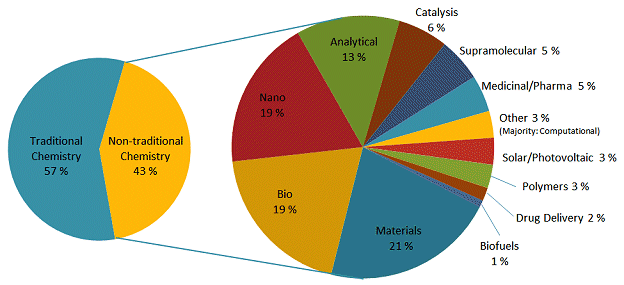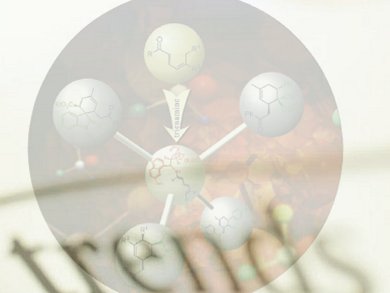With the use of individual electronic articles skyrocketing and the circulation of printed issues of journals in decline, perhaps fewer researchers, especially younger members of the community, are inclined to just browse through an issue of a journal or even an electronic table of contents to see what’s going on outside of their field of interest. However, the incredible breadth of contemporary scientific research makes doing just that a worthwhile investment.
It is common knowledge that the field of chemistry is becoming ever more diverse, but you might be surprised at just how broad the spectrum has become; a quick flick through the first 15 issues of Angewandte Chemie International Edition from 2012 reveals some surprising statistics.
In addition to authors from chemistry departments, contributions came from no less than 45 different fields of research. Materials science, the biological sciences, and physics are some of the more common affiliations among the authors, whereas textiles, telecoms, and art history are perhaps some of the more unexpected departments to make contributions.

Figure 1. Origin of manuscripts with only non-chemistry departments listed and no author from a chemistry department. Content analysis of Angewandte Chemie International Edition Vol. 51 (2012), Issues 1–15.

Figure 2. Origin of manuscripts from non-chemistry departments affiliated with at least one author from a chemistry department. Content analysis of Angewandte Chemie International Edition Vol. 51 (2012), Issues 1–15.
So the authors are a diverse bunch, but what about the manuscripts themselves? Some are easy to categorize and contain research on organic syntheses, inorganic crystallography, and similar topics. These papers may be considered by some as the more “traditional” face of chemistry, so taking this definition, just over half of the contributions can be classed as “traditional”. The balance of the manuscripts cover topics such as materials science, biological systems, or nanotechnology, and are perhaps not what the public, or even some researchers, would immediately think of as chemistry (labelled here as “non-traditional” purely for the purposes of differentiation).

Figure 3. Subject areas of Communications. Content analysis of Angewandte Chemie International Edition Vol. 51 (2012), Issues 1–15.
Of course, an analysis like this is very subjective and not particularly scientific, but it does raise an interesting question: Is it time to say that the whole concept of what constitutes “chemistry” itself has changed immeasurably in recent years (which is certainly a common argument from some observers in relation to recent Nobel Prizes in Chemistry), or do we take the different view that no matter how much the field evolves, scientists have still not forgotten that the basic discipline of chemistry is a fundamental part of advanced research?
Perhaps the best answer is that we should forget about semantics altogether and remember that even at the best conferences, exchanging ideas with scientists from more than 40 disciplines would be an extremely difficult task (not least because we all know that scientists like talking about their own research at length, so much so that simply finding enough time would be a challenge). Yet it is possible to do just that by clicking the mouse to open the latest table of contents email alert. The whole of the journal is greater than the sum of the individual articles? These numbers certainly suggest so.
Richard Threlfall is Associate Managing Editor of the new journal Asian Journal of Organic Chemistry.




